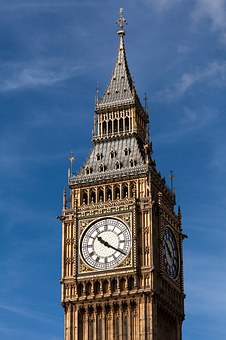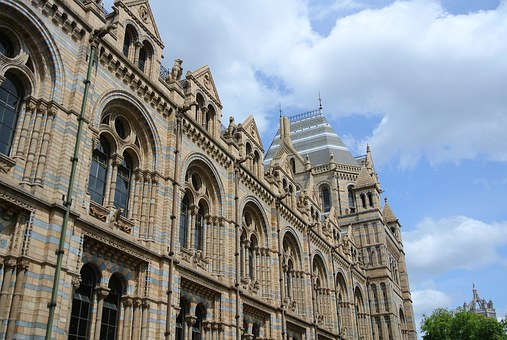Development Of Organised Crimes In U.K. In Comparison With Sicilian And American Mafia

Development Of Organised Crimes In U.K
Development Of Organised Crimes In U.K. In Comparison With Sicilian And American MafiaThe term organized crime refers to a set of criminal activities undertaken by set criminal actors. Organized crimes constitute of profit making activities which can be classified as drug-trafficking, kidnapping for profit, extortion, trafficking of people for money, environmental crime, illegal dumping of poisonous waste, complicated credit card fraud, smuggling of goods such as alcohol and tobacco in order to evade excise tax, intellectual property thievery, corruption, tax evasion and fraud against the European Union just to mention a few (Maguire, Morgan & Reiner 2007).
According to UK's SOCA website (Seriously Organized Crime Agency), the answer to the question what is organized crime?' is: "organized crime covers a very wide range of activities and individuals involved in a number of crime sectors" (Maguire, Morgan & Reiner 2007, p.777). At times, the term organized crime is used only to describe activities undertaken by underground-type figures. However, much of literature on terrorism, the 2006 SOCA report and the 2005 Council of Europe report states that organized crime also encompasses activities and people that assist and support serious crimes.
In U.K., the most serious organized crimes include trafficking of Class A drugs which include bhang, cocaine, marijuana and heroin, electronic identity fraud and organized immigration fraud (Akens 2009). Other forms of organized crimes present in the U.K. include organized vehicle crime and hijacking, serious robbery, fraud, counterfeiting, cultural property crime and use of firearms by serious criminals.

In the U.K., organized crime has adopted a modern pattern of conducting criminal activities which according to Salerno, R. and John S. Tompkins in their 1969 book titled The Crime Confederation' is referred to as "classical pattern of organized crime" (Akens 2009). This new pattern has seen organized crime move gradually from strategic and tactic crimes such as bribery, robbery with violence and assault to illegal business activities, big businesses and legitimate businesses. Many of organized criminals are seen to have great will to commit and employ high levels of tactics to commit crimes.
They therefore establish illegal and legal business activities to enable them raise funds and gain power to conduct their criminal activities. They undertake their activities in an organized, persistent and effortless manner and it can simply be said that they are good at what they do. Surprisingly, the illegal activities undertaken by criminal gangs often end up serving the same public which is opposed to their activities as the general public is also involved in vices and illicit activities whose services are rendered by these criminal gangs (Gus 2001).
Classical debates of organized crime are posited within the theories of Cressery and Albini. The Cressery theory of organized crime is also referred to as the Cosa Nostra Theory. The Cressey theory of organized crime encompasses the organizational structure of syndicate crime. This theory is made up of the following proponents; "interpretation of the testimony of informant Joseph Valachi before the McClellan Commission in the sixties, in which the term La Cosa Nostra' was first officially introduced, the organized crime section of the President's Crime Commission Report of 1967 and theoretical interpretations of its principal consultant, sociologist Donald Cressey, and official although belated politics of federal agencies such as the Federal Bureau of Investigation" (Hagan 2010, p.400).
Donald Cressery, together with the Organized Crime Task Force described the following major element of Cressery Theory, "a national wide alliance of at least 24 tightly knit "families" in the United States, membership that is exclusively of Sicilian or Italian descent, and the organization is referred to as Cosa Nostra particularly by East Coast members, and the names and criminal activities of approximately 5,000 participants have been assembled and the formal structure has been pieced together based on Valachi's testimony" (Hagan 2010, p. 400).
One of the arguments of the Cressery theory is that everyone who comes into close and occasional contact with criminals is likely to become a criminal too. This is based on behaviour pattern whereby the surrounding environment has a great impact on an individual's behaviour. Cressery continues to say that it is common in environments that lean towards criminality such as neighbourhood with high crime rates to find that most people who inhabit there are law-abiding. However, this theory has been criticized as the proposition that neighbourhoods with high rates of crime have inhabitants who are law-abiding only take into consideration the ratio between criminal and noncriminal individuals whereby noncriminal outweighs the criminals (Sutherland, Cressey & Luckersbill 1999).
On the other hand, the Albini model also referred to as the Patron Theory views organized crimes as a collection of a series of patron-client relationships. "According to this approach, organized crime groups and their leaders resemble a medieval system of shifting warlords in which whoever has the most power and is able to render the greatest service controls support. The occupation of specific positions within a structure is less important than a developmental-association of peer relations that are informal, flexible, and constantly immersed in conflict" (Hagan 2010, p.402). Therefore, organized crime families can be best described as feudalism, a series of shifting alliances, rather than corporate bureaucracy in the Albini Model.

In Britain, organized crime can be traced back in the early 20th century just like the case of Sicily and the United States. During the era of prohibition in the 1920s, Italian-American organized crimes started moving out of the Italian localities and they started becoming widespread organizations aimed at illegal racketeering and money making. These organizations had two distinctive features: they were based in the local communities where they sought control over the life of locals (to them, control and respect was of more importance than money making and illegal trading), and they were commonly structured on a decentralized family basis (Sutherland, Cressey & Luckersbill 1999).
In Britain, with specific reference to London, there was development of an organized crime type which came to be referred to as British Mafia or Cosa Nostra (Henner 1998). Just like the American and Sicilian Mafia, the British Mafia had the same feature as mentioned above. However, by the time British Mafia was being developed in Britain, the political and economic conditions in Britain were not similar to those that prevailed in America and Sicily in the early 20th century when American and Sicilian Mafia respectively were developed. Areas like East End in London were known to have contained criminal activities and gangs from the earliest times before the beginning of the 20th century. Areas like Clerkenwell, and old rookery had been a hide out for many criminal gangs like pickpockets, forgers, burglars and others of the like (Gus 2001).
The era just before the First World War, the character of London criminal outlook is exposed in the life of Arthur Harding whose life history was published by the historian Raphael Samuel. Arthur Harding native era of Whitechapel has been described by Raphael Samuel as, "Edward Emmanuel had a group of Jewish terrorists. There was Jackie Berman. He told a pack of lies against me in the vendetta case he had me put away...Bobby Levy he lived down Chingford way and his brother Moey. Bobby Nark he was a good fighting chap. In later years, all the Jewish terrorists worked with the Italian mob on the race course....The Narks were a famous Jewish family from out of Aldgate. Bobby was a fine big fellow though he wasn't very brainy. His team used to hang out in a pub at Aldgate on the corner of Petticoat Lane. I've seen him smash a bloke's hat over his face and knock his beer over. He belonged to the Darby Sabini gang that was made up of Jewish chaps and Italian chaps. He married an English lady stone rich they said she was worth thousands and thousands of pounds. He's dead and gone now" (Samuel 1981: 133-4).
http://www.articlesbase.com/college-and-university-articles/development-of-organised-crimes-in-uk-in-comparison-with-sicilian-and-american-mafia-4583837.html Newark Airport Limo – Making Travel Simple Loft Conversions London: What is a Dormer? Location Villa Bali - Villa Echo Beach India Tourism: Make Sure For a Unique Tourism Experience Newark Limo Travel in Style Advice for Summer Makeup India Wildlife Destinations Boosting Tourism in India Wear Celebrity Dresses-Celebrity Dresses Newark Limo Service A Great Way to Travel Types of Hyperion Solutions Available in South Africa Things You Need to Know When on a Sightseeing Tour in Abu Dhabi Where to buy Hyperion solutions in South Africa Teeing up for the 2011 Masters Tournament